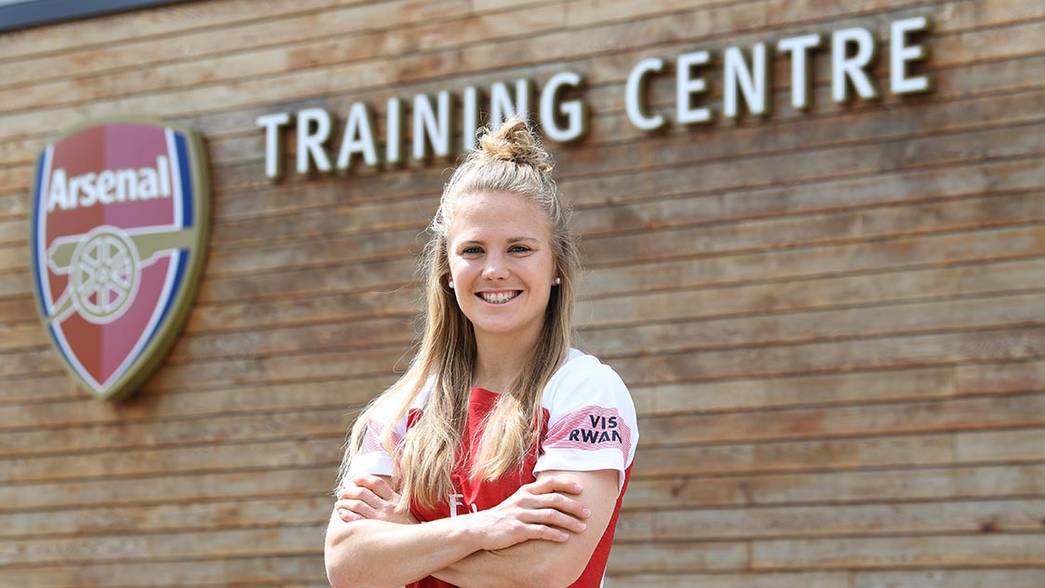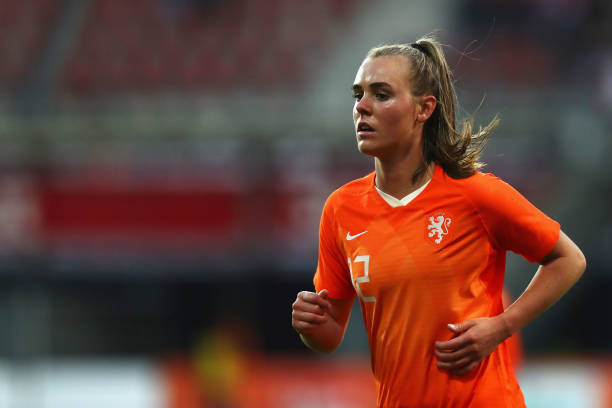Arsenal Women’s main transfer business was done before the World Cup with two players out and four players in so how is the squad looking and were are all the homegrown players?

There are therefore 21 players, out of a maximum of 23 players allowed as per the FA WSL regulations, in the squad.
Players out:
The two World-Cup runners-up – Dominique Bloodworth and Sari Van Veenendaal -departed before the tournament with Bloodworth bought by Wolfsburg while van Veenendaal club is still without a club. These two quality players have been replaced by players of equal quality.
In terms of youth players, a good number of them have left the club with Ava Kuyken and Abbie Robberts moving to the USA to study at Florida and Rutgers University respectively. Lachante Paul and Paige Bayley-Gayle have moved to Leicester City.
It will be interesting to see if Melisa Filis and Ruby Grant are given as many first-team opportunities this season as they got last season because a full season with the Academy team would probably slow down their development. Even if they are just u18 players this season, they did not look out of place when called up to the first team.
A loan to a championship side would certainly help but if Arsenal suffer another injury crisis next season, they will get games for sure.
Players in:

All the business was concluded before the World Cup, so we welcome one goalkeeper, two defenders and an attacking midfielder.
Manuela Zinsberger from FC Bayern, Leonie Maier from FC Bayern, Jennifer Beattie from Manchester City and Jill Roord from FC Bayern all arrived.
Squad depth
It is better than last year and all positions have been doubled-up except at centre-forward, because the back-up centre forward would not get much playing time at all behind Miedema.
There is a lot of quality in the team as all 21 players have been capped by their country.
The fact that many players can also play in three or four positions ensures maximum flexibility for Joe Montemurro in his squad building approach and with four competitions to be played this season, squad rotation will be key.
GK 2: Peyraud-Magning, Zinsberger
RB 2: Evans, Maier
LB 2: Mitchell, Kemme
CB 4: Williamson, Quinn, Beattie, Arnth
DM 2: Walti, Schnaderbeck
CM 2: Nobbs, Roord
AM 2: Little, Van De Donk
RW 2: McCabe, Carter
CF 1: Miedema
LW 2: Mead, Veje
The foreign players recruitment conundrum
We added another four foreigners to the already huge list of non-English players we currently have at the club.
In a Brexit context, and in case of hard Brexit, you do wonder what it could mean in terms of regulations. What kind of rules will the FA implement? It is a huge mystery.
We have to remember that the club was in breach of the FA WSL regulations on homegrown players last season as we had only five of them (Little, Mead, Carter, Nobbs and Williamson) and were nowhere near the 50% needed as per the rules.
You have to wonder why the club struggles to attract English players – and has struggled for a while, even if the lack of form was a factor in the last few years.
The last time we signed an English player was during the winter 2017 transfer window. If you look at the last transfer windows, here are the senior recruits that were signed:
Manuela Zinsberger (Austria), Leonie Maier (Germany), Jennifer Beattie (Scotland), Jill Roord (Netherlands), Janni Arnth (Danemark), Katrin Veje (Denmark), Victoria Schnaderbeck (Austria), Lia Lia Wälti (Switzerland), Tabea Kemme (Germany), Pauline Peyraud-Magnin (France), Vivianne Mediema (Netherlands), Lisa Evans (Scotland), Jessica Samuelsson (Sweden), Josephine Henning (Germany), Kim Little (Scotland), Heather O’Reilly (USA), Beth Mead (England), Anna Moorhouse (England), Danielle Van De Donk (Netherlands), Jodie Taylor (England), Katie McCabe (Ireland), Fara Williams (England), Josephine Henning (Germany), Asisat Oshoala (Nigeria), Marta Corredera (Spain), Sari Van Veenendal (Netherlands), Dominique Janssen (Netherlands), Lianne Sanderson (England), Jemma Rose (England), Natalia Pablos Sanchon (Spain), Vicky Losada (Spain).
I obviously took a big sample: over the last four years, we made 31 signings, six were English, that is barely 20% and only one of them is still at the club, while 15 of out 25 foreigners – 60% – are still at the club.
I really wonder why Arsenal do not seem able to sign up-and-coming English players, unlike City or Chelsea.
The foreign players that have signed are superb, but a club with such a great history should attract more English players.
The youth team players also rarely get a chance and have to leave, as seen with Rianna Dean and Anna Filbey who have just signed their first professional contracts with Spurs.
Luckily enough, there is no homegrown regulation in the Women Champions League unlike in the men’s otherwise the club would struggle to even fill a starting 11 with only six senior homegrown players this season.

